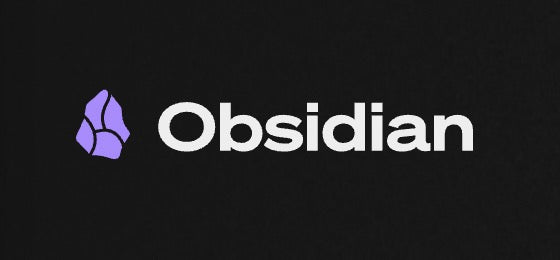
Bonus Post: Why I Switched to Obsidian and the Power of Plain Text
I've recently made the decision to convert to Obsidian for all my note taking, project management, and documentation—for this project as well as my day-to-day life and work. I had been using it on and off for notes and such, but never went all in. Now, after learning a bit more about the power of Obsidian and also the benefits of plain text, I've submitted my 3D research project outline after producing it solely in markdown in Obsidian.
This shift was partly prompted by a NoBoilerplate YouTube video titled The Unreasonable Effectiveness of Plain Text.
One quote from it stuck with me:
"In order to do more, you must have the discipline to do less."
That phrase really drove home why plain text—and by extension, Obsidian—made so much sense for me. Plain text forces simplicity. It lets me focus on what matters without getting lost in formatting or navigating convoluted structures. By doing less in terms of the tools and frills I use, I’ve opened up more mental space for the work that counts.
It makes no sense to be working on all these projects, having all these experiences in life and work, and then siloing that information into separate text documents, databases, and parts of my brain where they can’t reference or inform each other. With Obsidian, everything is in one place. All my notes are in a single vault where they can link to each other, where ideas can apply and be used in multiple places, and where connections can form that I never would have thought of in the same context otherwise.
The ability to create these connections—to easily link notes, thoughts, and references—is what makes Obsidian stand out. It’s not just about storing information; it’s about building a web of knowledge. The vault grows into something alive, where the more you add, the more the network makes sense, and the more useful everything becomes. It’s a structure that evolves with my thinking, not just a static repository of documents.

Another reason I’ve fully embraced Obsidian is portability. Everything in markdown means that I’m not locked into some proprietary format that might become obsolete or inaccessible. The fact that my 3D research project outline was done in markdown meant I could easily edit it on my phone, my laptop, or even in a basic text editor if I needed to. The freedom is incredibly reassuring—there’s no fear of losing my work or being unable to access it in the future. Even without Obsidians premium sync features I can push my vault to GitHub and work on it on any machine or I can us Google Drive to automatically sync the vault from my main computer to Google Drive where my phone can then access the files to make edits. All the while the original files live in plain text of my devices.
Obsidian also supports my workflow better than anything else I’ve tried. The ability to use backlinks, tags, and folders means I can take notes freely without worrying too much about where they "belong" when I first write them down. I'm not bogged down trying to format a word document when I can just use markdown and combine the notes into a cohesive final project file when I need to. If I’m researching UV unwrapping techniques, I can jot down a note about a new method and link it to relevant projects later. I’m not tied to a rigid structure, and it’s easy to go back and reorganize when needed—or let the connections naturally evolve as I work. It’s a balance of chaos and order that works for me.
Switching fully to Obsidian has felt like decluttering my brain. I'm excited to dive deeper into some of the community plugins like Day Planner and Advanced Slides to see how else I can use this structure to manage college work and life. It’s the discipline of doing less—fewer apps, less jumping between tools, fewer formats to worry about. But in doing less, I’ve created the space to think more deeply, to see more connections, and ultimately, to do more of what matters.
